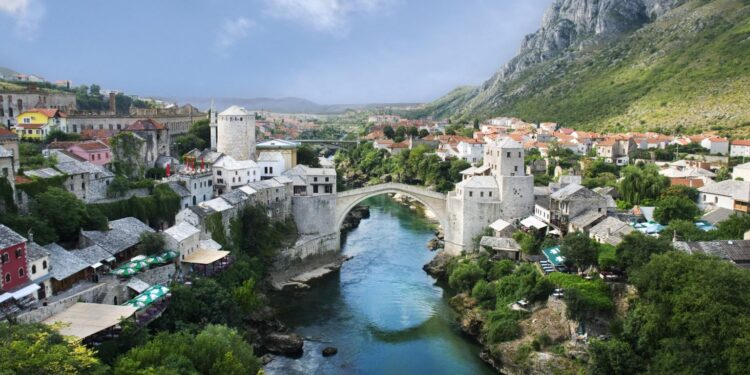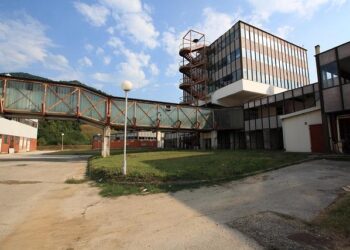Bosnia and Herzegovina stands at a pivotal moment in addressing the ownership and management of its agricultural land, a critical resource for the country’s economy and rural communities. Amid ongoing debates over land rights, foreign investment, and transparency, questions about who truly owns and controls agricultural property have come to the forefront. This article explores the complex landscape of land ownership in Bosnia and Herzegovina, examining legal frameworks, key stakeholders, and the implications for sustainable agriculture and local livelihoods-shedding light on a topic that remains shrouded in uncertainty but is vital to the nation’s future.
Ownership Patterns of Agricultural Land in Bosnia and Herzegovina Revealed
In Bosnia and Herzegovina, agricultural land ownership is characterized by a fragmented pattern shaped by historical land reforms and socio-economic transitions. The majority of agricultural parcels remain small-scale, typically family-owned, with an average holding size below 5 hectares. This prevalence of micro-owners reflects both the enduring influence of traditional farming practices and the challenges faced by farmers in consolidating land for commercial agriculture. Notably, a significant portion of land is privately held by individual households, with very limited presence of corporate or state-owned farms.
Key features of agricultural land ownership include:
- Approximately 80% of farmland is controlled by small family farms.
- Large commercial farms only occupy around 10% of agricultural land.
- State ownership is minimal, mostly limited to forested and grazing lands.
- Land fragmentation hampers productivity and modernization efforts.
| Owner Type | Land Share (%) | Average Holding Size (ha) |
|---|---|---|
| Family Farms | 80 | 3.8 |
| Commercial Farms | 10 | 25.6 |
| State-Owned | 7 | >50 (mainly forests) |
| Cooperatives & Others | 3 | varies |
Challenges Faced by Small Farmers in Securing Land Rights
Small-scale farmers in Bosnia and Herzegovina encounter a complex web of obstacles when attempting to secure legal ownership or long-term usage rights to agricultural land. Historical legacies of land fragmentation and ambiguous property titles continue to hinder efforts at land consolidation. Many farmers rely on inherited plots, often undocumented or subject to overlapping claims, which raises conflicts and legal uncertainties. The slow and costly administrative processes, combined with limited access to legal assistance, disproportionately affect these farmers, making formalization of land rights a distant goal for many.
Additionally, challenges are compounded by institutional weaknesses and lack of supportive policies. Banking institutions rarely accept agricultural land as collateral due to its unclear legal status, limiting farmers’ access to credit needed for investments. A further difficulty stems from market dynamics, where wealthier investors acquire large tracts of fertile land, pushing smallholders to marginal and less productive areas. The table below summarizes key barriers obstructing small farmers from securing rightful claims over agricultural land:
| Barrier | Impact |
|---|---|
| Land title fragmentation | Complicates ownership verification |
| Lengthy bureaucratic procedures | Delays formal land registration |
| Limited legal support | Increases vulnerability to disputes |
| Poor access to credit | Restricts investments in farming |
| Land market pressures | Displaces smallholders |
Policy Recommendations to Strengthen Land Ownership Transparency and Support Agricultural Growth
To foster greater transparency in agricultural land ownership, Bosnia and Herzegovina must prioritize the establishment of a centralized, publicly accessible land registry. This registry should be regularly updated and digitized, allowing stakeholders – from smallholder farmers to policy-makers – to verify land titles efficiently. Simplifying legal frameworks surrounding land transactions and strengthening enforcement mechanisms will reduce ambiguities, deter illicit acquisitions, and protect the rights of genuine land users. Additionally, investing in capacity-building for local authorities to monitor land use and ownership changes will support the integrity of the system and create accountability at all administrative levels.
Equally important is the implementation of policies aimed at bolstering agricultural productivity through secure land tenure. Providing targeted financial incentives, such as low-interest loans or subsidies, can empower small-scale farmers to invest in sustainable practices and modern equipment. Collaboration between government entities, farmer associations, and NGOs is crucial to ensure inclusive land governance and equitable resource distribution. The following table outlines key policy actions along with their expected impact on agricultural growth and transparency:
| Policy Action | Expected Impact |
|---|---|
| Centralized Land Registry | Improved ownership clarity and reduced land disputes |
| Legal Framework Simplification | Streamlined transactions and enhanced investor confidence |
| Financial Incentives for Farmers | Increased agricultural productivity and rural investment |
| Stakeholder Collaboration | Equitable land access and stronger governance |
- Digitization: Promote use of digital solutions for land records.
- Capacity Building: Train local officials in land management.
- Inclusivity: Incorporate marginalized groups in land policy dialogues.
In Summary
In conclusion, the ownership of agricultural land in Bosnia and Herzegovina remains a complex issue shaped by historical legacies, legal frameworks, and ongoing socio-political challenges. As the country continues to navigate reforms and integration with broader European markets, transparency and equitable land distribution will be crucial for sustainable agricultural development. Stakeholders from government, local communities, and international organizations must collaborate to ensure that land ownership policies support both economic growth and social stability in the region.



![Bosnia & Herzegovina — Situacioni izvještaj o mobilnosti migranata (November 2025) [BS] – ReliefWeb](https://europ.info/wp-content/uploads/2026/01/3037004-bosnia-herzegovina-situacioni-izvjestaj-o-mobilnosti-migranata-november-2025-bs-reliefweb-350x250.jpg)










![Azerbaijan reaffirms support for Somalia’s sovereignty at OIC emergency meeting [PHOTOS] – AzerNews](https://europ.info/wp-content/uploads/2026/01/3037165-azerbaijan-reaffirms-support-for-somalias-sovereignty-at-oic-emergency-meeting-photos-azernews-120x86.jpg)

